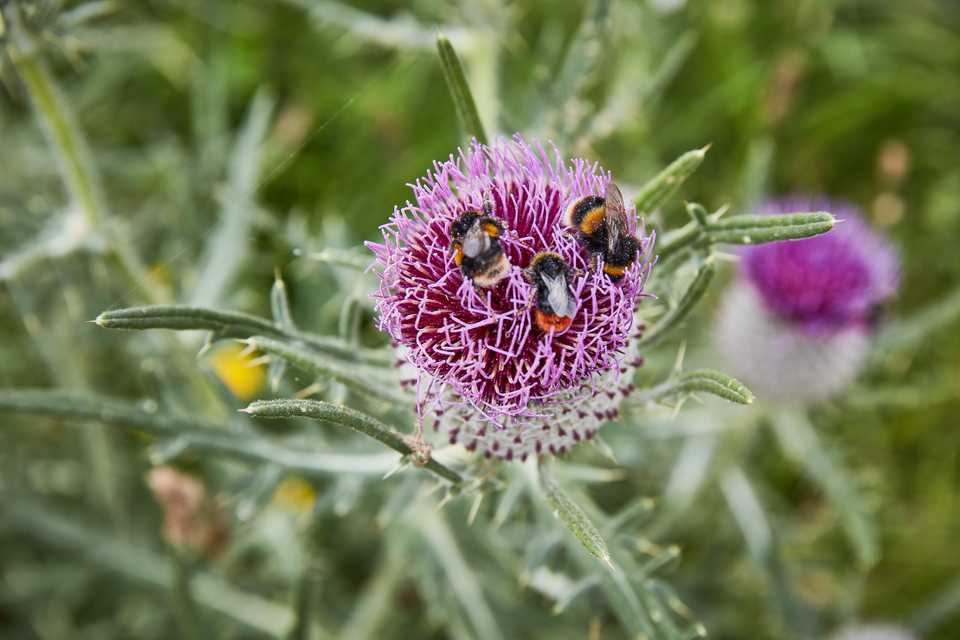Table of Contents
PEI Report Chapter 8 : Click Here
PEI Report Figures : Click Here
PEI Report Appendices : Click Here
Glossary : Click Here

Baseline
There are numerous sites designated for ecological interest within the vicinity of the proposed scheme. These include Cotswold Beechwoods Special Area of Conservation (SAC) and several Sites of Special Scientific Interest (SSSI) including Crickley Hill and Barrow Wake SSSI of which the Barrow Wake unit is partly within the proposed scheme boundary. There are also many Local Wildlife Sites in the surrounding area including Ullen Wood Ancient Woodland and an adjacent Woodland Trust site.
There are protected and priority species within the proposed scheme area including bats, badgers, reptiles, Roman snails, barn owl, invertebrates and hedgehogs. There are also habitats of principal importance (priority habitats) within or adjacent to the proposed scheme including, lowland calcareous grassland, deciduous broadleaved woodland (including ancient woodland and veteran trees) and hedgerows.
Construction
The sites of ecological interest and other priority habitats throughout the proposed scheme have the potential to be affected by the proposed scheme either directly as a result of habitat severance and loss, or indirectly due to changes in air quality from dust and pollution, noise and vibration, or hydrological changes resulting in degradation of habitat.
Protected species have the potential to be affected by the proposed scheme both directly and indirectly. To minimise adverse effects mitigation measures such as the sensitive timing of works and protection of retained habitats are embedded within the construction phase to avoid or reduce the impacts of habitat loss, habitat degradation, habitat fragmentation, disturbance and species mortality. Further mitigation measures are provided for specific species including replacement bat roosts where habitats are lost during construction, and the creation of replacement habitat for reptiles, badgers and Roman snails in advance of construction.
Preliminary construction assessment
The proposed scheme would have likely permanent and temporary impacts resulting in adverse and beneficial significant effects on some protected species and habitats. These include:
- Adverse significant effect on Crickley Hill and Barrow Wake SSSI.
- Adverse significant effect on veteran trees and semi-natural woodland.
- Beneficial significant effect on semi-natural woodland due to planting of new woodland.
- Adverse and beneficial significant effect on species-rich hedgerows due to loss of existing and planting of new hedgerow.
- Adverse significant effect on species-rich grassland.
- Beneficial significant effect on calcareous grasslands due to creation of new species-rich calcareous grassland.
- Adverse significant effects on bats and barn owls.
Operation
Potential impacts on protected species during operation may include, but would not be limited to, disturbance from increased levels of noise or lighting, habitat degradation due to changes in air quality and incidental mortality through animal vehicle collisions.
Mitigation measures incorporated into the proposed scheme design include a number of crossings to provide connectivity for wildlife including the Gloucestershire Way crossing, two smaller overbridges with hedgerows, wildlife-friendly culverts, and underpasses to maintain connectivity for species such as badgers and bats.
Habitats appropriate for the Cotswolds AONB, native broadleaved woodland, calcareous grassland and species rich hedgerows, would be created along the route to connect existing habitat and wildlife corridors, which would mitigate the loss and fragmentation of habitat due to the proposed scheme. The proposed scheme maximises biodiversity delivery and provides an increase in priority habitats for protected and notable species.
Wildlife fencing would be included to reduce the risk of mortality to badgers and other wildlife. Hedgerow, woodland, tree and scrub planting would assist in encouraging and channelling movement of badgers away from the highway and through safe culverts, underpasses and overbridges. Tree planting adjacent to the road will encourage bats and barn owls to fly over the road at height to reduce the risk of mortality from traffic collisions.
Preliminary operation assessment
- The proposed scheme would have a likely adverse significant effect on barn owls through increased risk of mortality and injury through traffic collisions, and severance of habitat.